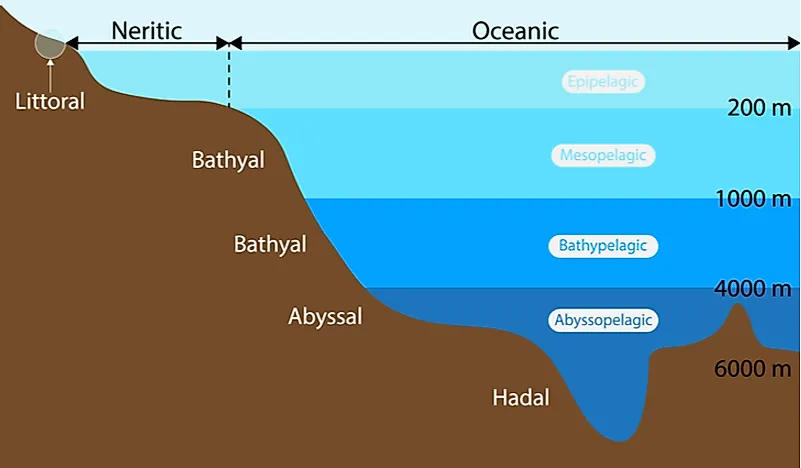What Type Of Animals Live In The Neritic Zone Of The Ocean?

The neritic zone refers to a section of the ocean that has a depth of about 660 feet, which is a height just slightly above the edge of the continental shelf. In marine biology, this zone offers a stable environment with sufficient sunlight for marine life such as fish, corals, and plankton. Also known as the sublittoral zone, coastal waters, or the coastal ocean, the neritic zone offers the most conducive habitat for marine life. From the point of view of physical oceanography, the neritic zone is the region of the ocean where there is a significant tidal flow as well as energy dissipation. Similar to marine biology, this zone also begins from the continental shelf’s edge. Most people who enjoy scuba diving or snorkeling usually do so in the neritic zone, which is not far off from the beach.
Characteristics of the Neritic Zone
The zone’s major characteristic is that it is close to the shore and is full of marine life. This zone is able to support life due to the abundance of food and nutrients that can support a complete food web. Another trait of the zone is that it is full of dissolved oxygen as well as carbon dioxide from the atmosphere. Plants also release oxygen into the water. Living organisms such as fish depend on the oxygen for survival while photosynthetic plants cannot make food without carbon dioxide. All these gases are available within the entire zone due to the proximity of the waters to the atmosphere. The zone also has a lower pressure and has a much more stable benthic zone (the ocean floor) compared to other zones.
Animals in the Neritic Zone
Plankton is one of the most common life forms in this zone. Plankton, which is usually seen with some form of visual aid, include the common phytoplankton and zooplankton. The former are plants while the latter are categorized as animals. On a larger scale, phytoplankton is the leading source of photosynthesis and utilizes minerals in the ocean in a way that is similar to terrestrial plants.
Seaweeds are also common, especially in the Atlantic Ocean’s neritic zone. Some of the most common seaweeds are known Sargassum fluitans and Sargassum natans. In some parts of the zone, seaweeds are so dominant that they have created tiny ecosystems of their own. In addition to the seaweed, the coral reef supports the growth of mangroves. The roots of the mangroves are usually in the soil while their leaves sprout up above the water level.
Aside from the above, the zone supports a wide range of fish species including bluefin tuna, herring, capelin, mackerel, and many more species. The plankton attracts smaller fish, which attract larger fish who complete the web. Larger species include blue whales, humpback whales, whale sharks, and others. Whale sharks, which are the largest fish species on earth, only eat plankton.
These animals have adapted to life in the zone in several ways. For example, they have different colors for reasons including camouflage and warning off of other creatures. Others have adapted to life in saltwater some creatures migrate between freshwater and saltwater environments.











